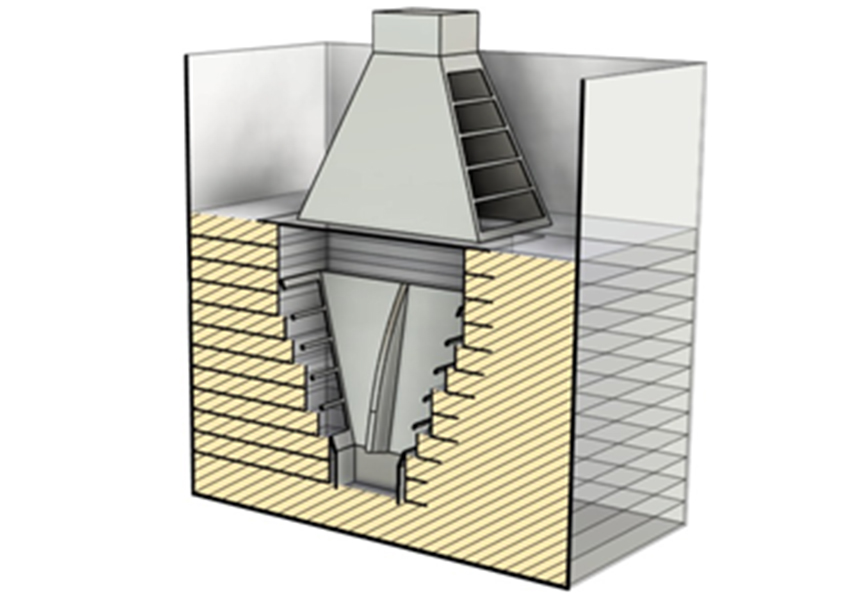-

Novel nanocrystalline cores for EMI suppression in cables: characterization methodology and performance study
Adrián Suárez Zapata, José Torres País (Director)
(2021). ThesisThe ideal procedure to start designing an electronic device is to consider the Electromagnetic Compatibility (EMC) from the beginning. Even so, EMC problems can appear afterward, especially when the designed system is interconnected to external devices. Thereby, Electromagnetic Interferences (EMI) could be transmitted to our device from power cables that interconnect it with an external power source or when it is connected to another system to establish a wired communication. When the cables represent the EMI source, which implies failing the conducted or radiated emissions test, a widely used technique is applying an EMI suppressor such as a sleeve core. The integration of this kind of...
The ideal procedure to start designing an electronic device is to consider the Electromagnetic Compatibility (EMC) from the beginning. Even so, EMC problems can appear afterward, especially when the designed system is interconnected to external devices. Thereby, Electromagnetic Interferences (EMI) could be transmitted to our device from power cables that interconnect it with an external power source or when it is connected to another system to establish a wired communication. When the cables represent the EMI source, which implies failing the conducted or radiated emissions test, a widely used technique is applying an EMI suppressor such as a sleeve core. The integration of this kind of component can involve an extra cost in terms of the production of the system. Nevertheless, this situation are usually compensated by the effectiveness of sleeve cores to filter interferences without having to redesign the electronic circuit. This is one of the main reasons designers extensively use this EMI suppression solution to meet EMC compliance requirements. The most used EMI suppressors cores for filtering applications are based on ceramic materials (also known as polycrystalline materials or soft ferrites). One of the conventional ceramic materials most used is MnZn that is intended to reduce EMI in the frequency range from the higher Kilohertz to the very low Megahertz region. Other widely used core materials are those based on NiZn compositions since they work in a broadband frequency range. Nevertheless, conventional materials used to manufacture sleeve core EMI suppressors are focused on reducing disturbances in cables in a specific frequency region. Consequently, new materials that can provide a more significant EMI suppression had to be studied to ensure electromagnetic compatibility in those frequency regions not specifically covered by traditional solutions. The results obtained by other EMC components, such as the common-mode-chokes based on nanocrystalline compositions, have shown significant effectiveness in terms of insertion loss in a wide frequency range because of their high initial permeability. From the preliminary results and features offered by the nanocrystalline material, this Ph.D. study focuses on carrying out a thorough characterization of the performance of sleeve EMI suppressor components based on nanocrystalline material. Thereby, the overall aim of the present doctoral thesis is studying, analyzing and evaluating the nanocrystalline material suitability to manufacture sleeve core EMI suppressor to reduce the interferences in cables as an alternative to conventional ceramic materials, traditionally used to produce EMC components. This research is carried out by designing and implementing a measurement setup method that makes it possible to determine the insertion loss parameter provided by a specific sleeve core when applied to a cable that interconnects two systems with a specific impedance. These results are correlated with a finite element method (FEM) simulation model that makes it possible to evaluate the accuracy of the experimental data and evaluate different sleeve core samples by introducing their magnetic properties and dimensional parameters. Finally, samples with different sizes are analyzed with the aim of determining the dependency between performance and component volume. The increase of the dimensions is usually proportional to its weight, volume and cost, thus a balance between these three features and performance should be carried out. The goal is to obtain a parameter that relates these features in order to determine the optimized dimensions of a sleeve core that can provide the effectiveness necessary to reduce a specific level of EMI in a cable.
Read more HideCalificación: Sobresaliente Cum Laude










